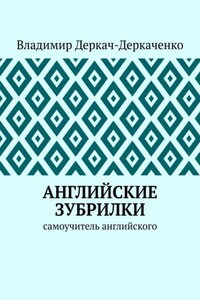The verb has finite and non-finite forms, which are also called verbals. The verbals do not express person, number or mood. Therefore they cannot be used as the predicate of a sentence.
e. g. He does his home-work. (does – finite form of the verb, it expresses 3>rd person, singular, present tense, active voice, indicative mood, non-perfect, non-continuous)
e. g. Watching TV he does his home-work. (watching – non-finite form of the verb, it does not express person, number or mood)
Like the finite forms of the verb the verbals have tense and voice distinctions, but their tense distinctions differ greatly from those of the finite verb.
There are three verbals in English: the participle, the gerund and the infinitive.
In Russian we also have three non-finite forms of the verb – причастие, деепричастие, инфинитив.
1.2 The characteristic traits of the verbals
The verbals have the following characteristic traits:
1) they have a double nature, nominal and verbal – the participle combines the characteristics of a verb with those of an adjective; the gerund and the infinitive combine the characteristics of a verb with those of a noun;
2) the tense distinctions of the verbals are not absolute (like those of the finite verb), but relative; the form of a verbal does not show whether the action it denotes refers to the present past or future; it shows only whether the action expressed by the verbal is simultaneous with the action expressed by the finite verb or prior to it:












